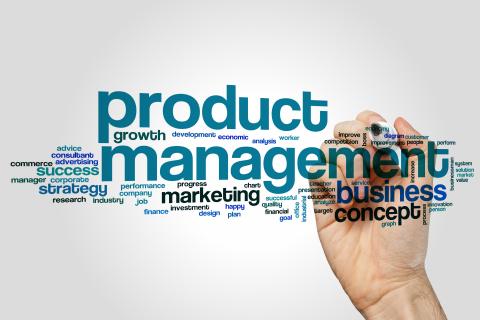The Lifecycle of a Tech Product
December 11, 2023The journey of a tech product, from the spark of an idea to its final release, is a dynamic and intricate process that involves multiple stages. Key to the process are product managers, who help to operationalize, advance, evaluate, and iterate nearly every part of the process.
Entry-level salaries for product managers average nearly $130,000, with leadership positions commanding more than $300,000. Capitol Technology University’s master’s degree in product management can prepare you for these engaging and lucrative careers by giving you the skills needed to manage all aspects of the tech product lifecycle.
Here’s a look at the lifecycle of a tech product from ideation to potential decline and where product managers fit in each step of the way.
Introductory Phase
-
Idea Generation: The journey of a tech product begins with the identification of a problem or need in the market. Product managers, innovation teams, or entrepreneurs brainstorm and generate ideas to address these challenges.
-
Market Research: With an idea in mind, market research is conducted to validate it and understand the viability and desirability of the product. Product managers play a crucial role in this phase, helping to analyze the target audience, competition, and potential demand to ensure the product finds the right audience at the right time.
-
Design and Development: This stage involves crafting the design and experience of the product, with technical architects defining the system architecture and infrastructure. Product managers work closely with design and development teams to ensure alignment with the initial concept.
-
Prototyping: With a design in hand, product managers oversee the creation of a basic or high-fidelity prototype that can test the feasibility of the idea.
-
Testing: On the back end, the product is tested to ensure it is bug-free, functional, and aligns with technical requirements and safety standards. On the front end, product managers coordinate user testing to gather valuable feedback that can inform refinements to the design before proceeding to full-scale development.
Launch and Marketing
-
Pre-launch Buzz: Product managers collaborate with marketing teams to build anticipation for the product through landing pages, social media teasers, and PR campaigns. A critical aspect at this juncture is ensuring the messaging aligns with the product's core value proposition.
-
Product Launch: The product is officially introduced to the world through public events, online launches, or partnerships with retailers. Product managers play a key role in orchestrating these efforts and tracking progress across cross-functional teams.
-
Marketing and Sales: Product managers continue to contribute by collaborating on effective marketing and sales strategies, driving awareness, generating leads, and converting potential customers into users.
Growth Stage
-
Post-Launch Support: Product managers ensure continuous support, addressing user issues and overseeing the rollout of regular updates based on feedback and market trends. They also facilitate the collection of user feedback through surveys, interviews, and analytics.
-
Product Iteration: Based on feedback and market trends, product managers guide the team in iterating on the product, adding features, fixing bugs, and enhancing the overall user experience.
-
Scaling and Expanding Reach: Monitoring user adoption and feedback, product managers collaborate with teams to implement strategies for scaling the product and expanding its user base. As the product gains traction, product managers may strategize and lead efforts to expand to new markets, platforms, or user segments.
Maturity Stage
-
Maximizing Profits: At this stage, production and marketing costs typically decline, making it the most profitable phase. However, challenges such as market saturation may arise, prompting product managers to alter strategies to sustain success.
-
Optimizing Operations: Using the experiences and feedback provided up to this point, product managers can help streamline production, optimizing distribution networks, and negotiate better contracts with suppliers.
-
Managing Competition: As the product becomes viable, it invites competition from other companies. Product managers work to ensure brand preference by focusing on service and customer relationships.
Decline Stage
-
Product Decline: Eventually, most products enter a decline phase where sales drop, and sustaining profitability becomes challenging. This often occurs due to enhanced competition or a decline in relevancy for the product.
-
Innovation or End of Life: Product managers, in consultation with other stakeholders, decide whether to discontinue, innovate, or transition the product to maintenance-only mode.
Factors Affecting the Product Lifecycle
-
Market Size and Competition: The competitiveness of the market significantly influences the product's lifespan and success.
-
Technology Advancements: Rapid technological changes may necessitate frequent updates or new versions to keep the product relevant.
-
User Adoption and Retention: The success of a product relies on its ability to attract and retain users, emphasizing the importance of user-focused strategies.
-
Marketing and Sales Efforts: Effective marketing and sales strategies are pivotal in shaping the product's launch, growth, and reach.
For more information on Capitol Technology University’s degree programs, contact our Admissions team at admissions@captechu.edu.





